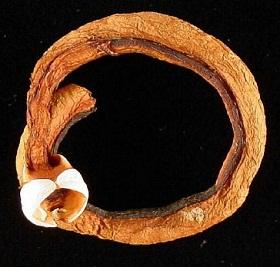Understanding longevity: From gene sequences to social inequity
03 April 2025
Published online 14 January 2013

Shipworms are a family of mollusks with a slender body and a pair of teeth-like shells that rasp through submerged wood, earning them the moniker "termites of the sea" for the damage they wreak to boats and piers. They harbor a species of bacteria in their gills, Teredinibacter turnerae, thought by microbiologists to enable the shipworms to digest woody cellulose and absorb nitrogen.
After sequencing the genome of T. turnerae and carrying out a chemical and gene analysis, Margo Haygood, a biologist at the Oregon Health and Science University in Beaverton, and colleagues discovered that the microbes produce tartrolons, a family of boron-containing antibiotics. Their discovery appears in the Proceedings of the National Academy of Sciences.
It is not yet clear exactly how tartrolons benefit the shipworms. One theory is that they help to clear the digestive tract of unwanted bacteria that would otherwise compete with the shipworm for the sugars produced as the wood is digested, says Haygood. Alternatively, they may protect the shipworm gills from strains of bacteria that might displace T. turnerae.
Haygood hopes to determine which of these two possibilities is correct by identifying whether the antibiotics are found in the shipworms' digestive tracts or in their gills.
The antibiotics found could be the tip of the iceberg, says Haygood. "We expect to discover new classes of antibiotics, some of which could have clinical potential for humans," she says.
So far, the team — which includes microbiologist Amro Hanora at the Suez Canal University, in Egypt, and Egyptian biologist, Sherif Elshahawi, currently at University of Kentucky — has examined shipworm species native to the United States and the Philippines. They now plan to study species found in the Red Sea for more antibiotics.
"A big advantage of such antibiotics is that they have evolved over millions of years to be beneficial to animal hosts, which helps to reduce the problem of toxicity seen with some drugs," Haygood says.
doi:10.1038/nmiddleeast.2013.5
Stay connected: